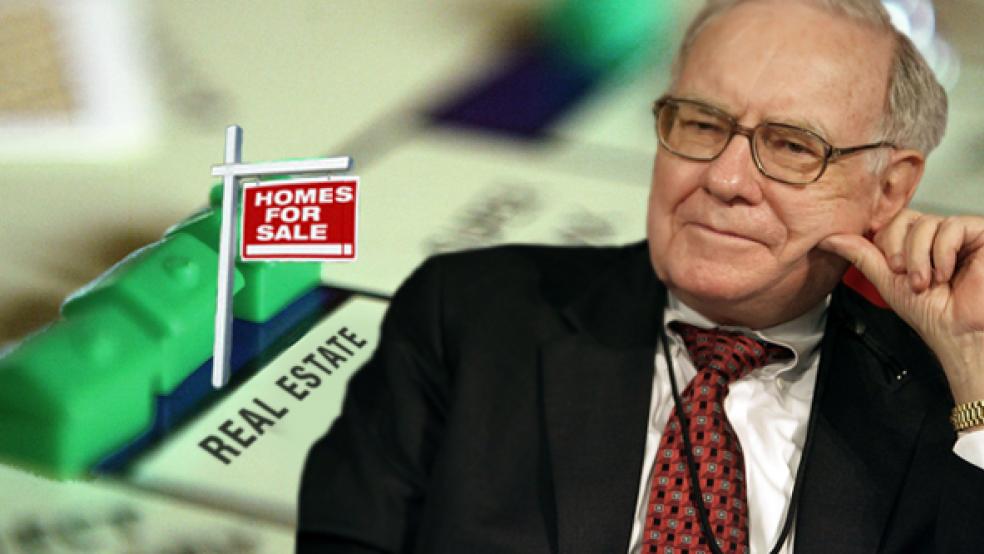For those who have heard the rumblings that real estate is back – the National Association of Realtors (NAR) had forecast a 5-percent increase in the number of home sales in 2012 – a key report released last week delivered a jolt. U.S. home prices fell in December to their lowest levels since the housing crisis started in mid-2006, according to the S&P/Case-Shiller Home Price Indices.
But instead of being deterred by continued weakness in the housing market, investors are seeing opportunity. The combination of low prices, predictions that the market could be close to bottoming out and a strong rental market have inspired many investors to cash in on the real estate market. A Bank of America Merrill Lynch analysis last month concluded that all-cash purchases—most of them made by investors—comprised almost a third of all homes sold in January. Additionally, a report the same day from the NAR showed investors snapping up 23 percent of homes in January, up from 18 percent in 2011.
In the worst-hit markets, investors – and speculators – are buying even more. Absentee purchasers (most of whom are investors) made up almost 50 percent of sales in Las Vegas and about 40 percent in Phoenix last month, according DataQuick, a firm that analyzes real estate data.
RELATED: The 12 Hottest Housing Markets for 2012
The low home prices and strong rental market mean that cash-flow prospects for investors have improved. The rental market’s growth has been the mirror image of housing’s bust. As families lost homes to foreclosure and new buyers were scared to get into a shaky market, the homeownership rate dropped to 66 percent in fourth quarter of 2011, the lowest it’s been since second-quarter of 1998. That’s meant that thousands of families who were owners are now renting. As a result, the rental vacancy rate dropped from almost 11 percent in the fourth quarter of 2009 to 9.4 percent in the fourth quarter of 2011, and average rents rose 2.5 percent last year.
Those improving investment prospects have attracted the gaze of mega-financiers. GTIS Partners, a real estate buyout fund, announced in January that it will spend $1 billion by 2016 on single-family homes to manage as rentals, according to a Bloomberg Businessweek report. Also last month, two investment management companies—GI Partners and Oaktree Capital, said they’d be sinking $1 billion and $450 million into similar deals. That was all before investment oracle Warren Buffett announced in his February 25 annual Berkshire Hathaway shareholder letter that he would love to jump into real estate as only one of the world’s richest people can—by buying $17 billion worth of residential housing. Over the long term, Buffett told a CNBC interviewer, houses will even outcompete stocks if they’re purchased at low interest rates.
The declining dollar is also attracting foreign investors who think the time is right. Deals involving overseas buyers rose 14 percent between 2009 and 2011, from $36 to $41 billion, according to NAR data. A May 2011 NAR survey found that about half of the foreign buyers came from Canada, Mexico, China, Britain and India and that they tended to buy more expensive houses — $315,000 versus the overall average of $218,000. Continued weakening of the dollar likely will increase the share of foreign buyers; 80 percent of realtors surveyed said the low value of the dollar was a factor in selling to foreign clients.
But not all real estate investors are large, out-of-town speculators who swoop in to buy dozens of properties. In fact, it’s small-time investors who have had the biggest role in converting distressed foreclosures to working rental properties, according to a January white paper by the Federal Reserve. Most investors are new to the business and don’t flip properties — 64 percent have done only one deal, according to a 2011 survey by online real estate website operator Move Inc. Two-thirds of those surveyed noted that they’re investing for the long term, and half plan to hold their properties for five years or more. Most also stay local. A 2011 NAR survey found that on average, investors buy 19 miles from home.
That fits with Sharon Vornholt’s experience. A real estate “wholesaler” in Louisville, Ky., she buys properties for resale to investors. She mostly sees small players at showings and auctions, many of whom jumped into investing full time in the last year or so given the market’s low prices. She knows only a few bulk investors — those who have dozens to hundreds of properties. That fits with national trends: The NAR’s Walter Molony says big investors tend to buy at auctions, which make up less than 2 percent of the total real estate market.
No one seems willing to make confident predictions about real estate’s short-term prospects, given the uncertainty about how soon the glut of remaining foreclosures will work its way through the market. Robert Shiller, the Yale economist who helped develop the methodology behind the Case-Shiller Indices, told reporters on a conference call that, “We might be on the verge of a recovery, but we might not,” according to MarketWatch. But Lawrence Yun, chief economist at the National Association of Realtors, is more hopeful, citing an uptick in pending home sales in January 2011 compared with the same time last year: “The trend in contract activity implies we are on track for a more meaningful sales gain this year,” he says.
But in the longer term, investors are betting that the market will turn and that by buying cheap houses now, they’ll be well positioned when it does. “I believe investors will play a huge part in cleaning up this mess. They’re committed to taking these houses and making them into homes for people and getting neighborhoods stabilized,” says Vornholt.





